Running Before Or After Lifting: Which Is Best?
Author:
Reviewed by:
(21 years of Oly Lifting experience)
Unlock your full potential by engaging with our experts and community! Have questions about your fitness journey or looking for expert advice on weightlifting techniques? Don’t hesitate — leave a comment below and Oleksandr Zagrebelnyi will provide a personalized answer and insights to help you reach your goals.
Torokhtiy is reader-supported. Some links are affiliate links, and we may earn a commission at no extra cost to you. See our disclosure page for details.
Should I run before or after lifting weights? If you’re asking yourself this question, then this article is for you! Most of us know the countless benefits of exercise such as lower chronic disease risks and improved overall health status. Running and weightlifting are popular exercise choices and each has advantages, but it’s tricky to know which to complete first in your training plan.
So, running before or after lifting… which is best?
The question of whether running before or after lifting weights boils down to personal goals. If your primary focus is a race, it’s best to complete your running before lifting, but if gaining strength and mass is your priority, then it’s best to do your running after lifting.
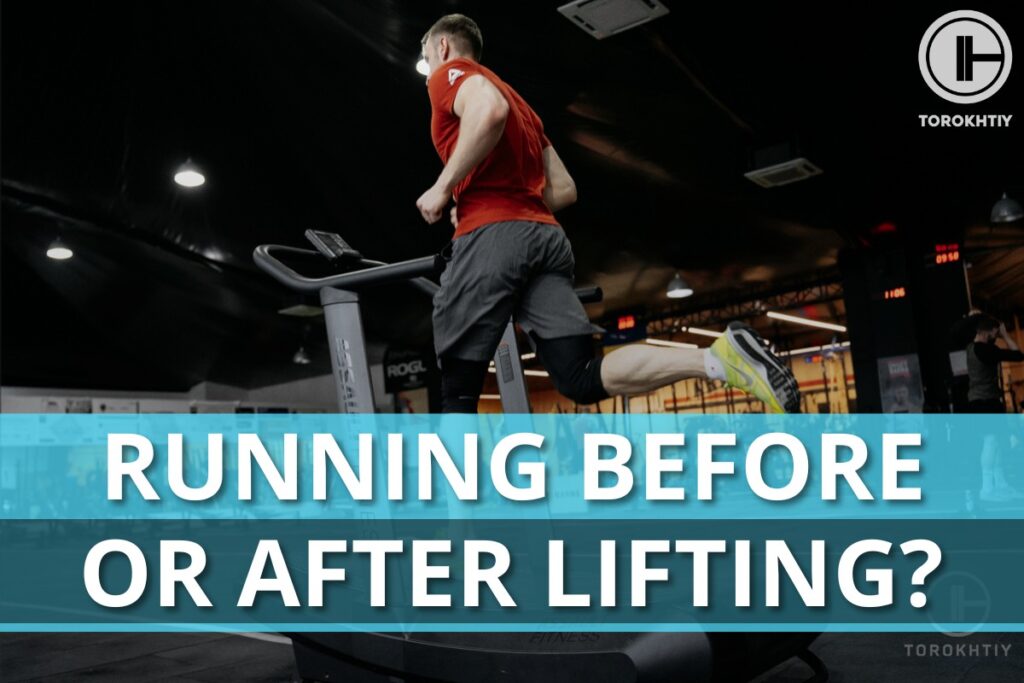
Is It Better To Run Before Or After Lifting?
Running is a beneficial cardiovascular exercise, and it’s a chosen activity for many to increase the heart rate, get blood pumping around the body, and improve overall fitness. Weight lifting or resistance training also has numerous upsides such as increased bone density and an overall improved sense of health and well-being.
When designing a program, it can be difficult to know which style of training to complete first in your session, or whether you should separate the training into different days. Should you hit the treadmill from the get-go? Or is it better to head to the bar first, before rounding off your training with a run? Well, to give a brief answer – you should focus on the style of exercise you’re looking to see the most progress with.
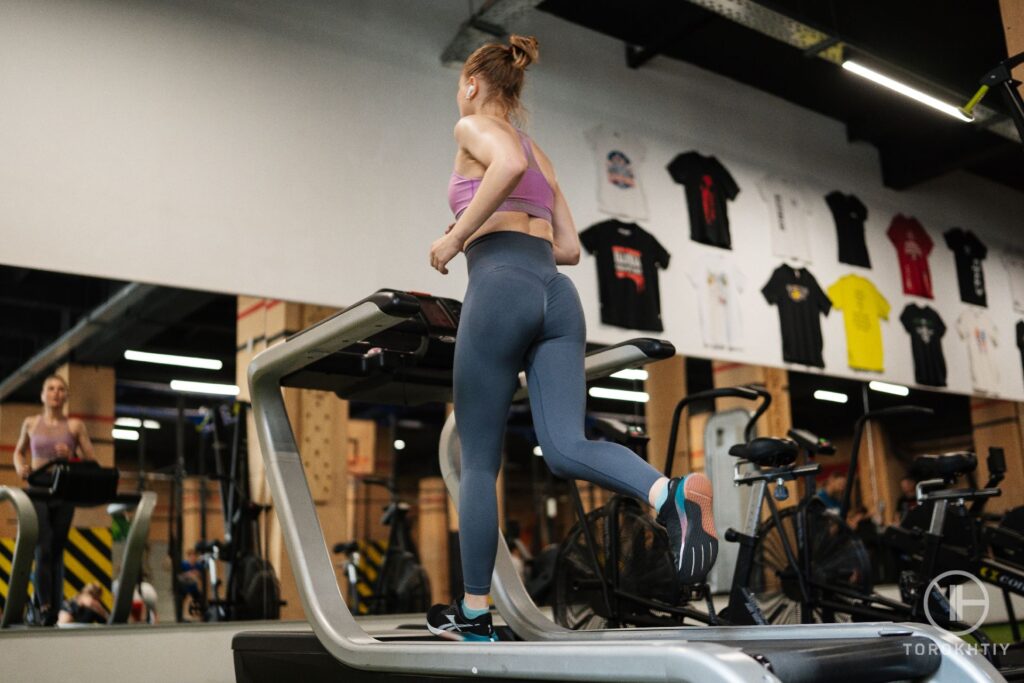
Distance runners, or those generally focussing on their running ability should focus predominantly on their cardio training which can be completed alongside resistance training. If this is the case for you, it’s best to harness the energy of your training session by completing strength training after running.
When your goals are directly related to resistance training and hypertrophy, it’s wise to complete your weight session and follow it up with a run. This doesn’t mean you shouldn’t complete an effective warm-up, as studies are leaning toward warm-ups for decreased risk of injury. It does, however, mean you likely won’t see the best results in your weight training if you’re pounding the treadmill before every session.
Pros And Cons Of Running Before Lifting
There are two sides to the story when we look at running before lifting, so it’s essential to weigh up the pros and cons and decide if this is best for you.
✅ Warms Up The Body
Running before lifting is ideal for getting the body warmed up and ready to continue into a successful gym session. It’s perfect for pumping blood around the body, warming muscles, and getting you in the headspace to train. It’s important, however, to focus on your goals and the results you want to see from the training you’re completing.
If you’ve got your eye on a running race in a few weeks, running before lifting means most of your energy will be exerted during the run, and less in resistance training if it’s the secondary form of exercise.
❌ Uses Energy
Questioning is it better to run before or after lifting is a valid query, as the ordering of the exercises has the potential to affect your session and progress in varying ways. One downside to completing a run before weights is that your body will use up significant energy during the run.
If hypertrophy is the goal, you want to make sure you have a solid store of energy to carry you through your resistance training, and enough to make sure you rest and recover well too. Running before the session can eat into these energy stores so you have less when it comes to lifting dumbbells.
Follow us!

Free!
Get a 2-week Weightlifting Program as a bonus for the subscription to kickstart your training plan!

Free!
✅ Good For Mental Focus
An important factor that’s often overlooked with running, is how impactful it can be on mental health, especially for anxiety and depression. Although more research needs to be completed in this area, running potentially has the power to lighten mood and increase focus, which can be a beneficial part of getting your head in the game, and ready to have a solid session.
❌ Increased Risk Of Injury
Most sports and exercises have an injury risk, and running is no exception. Completing a few miles on the treadmill before hitting the squat rack can increase the risk of injury, especially in the knees and ankles as these are common areas for running injuries. These risks can be decreased by correct running form, and not overexerting the body prior to a weight training session.
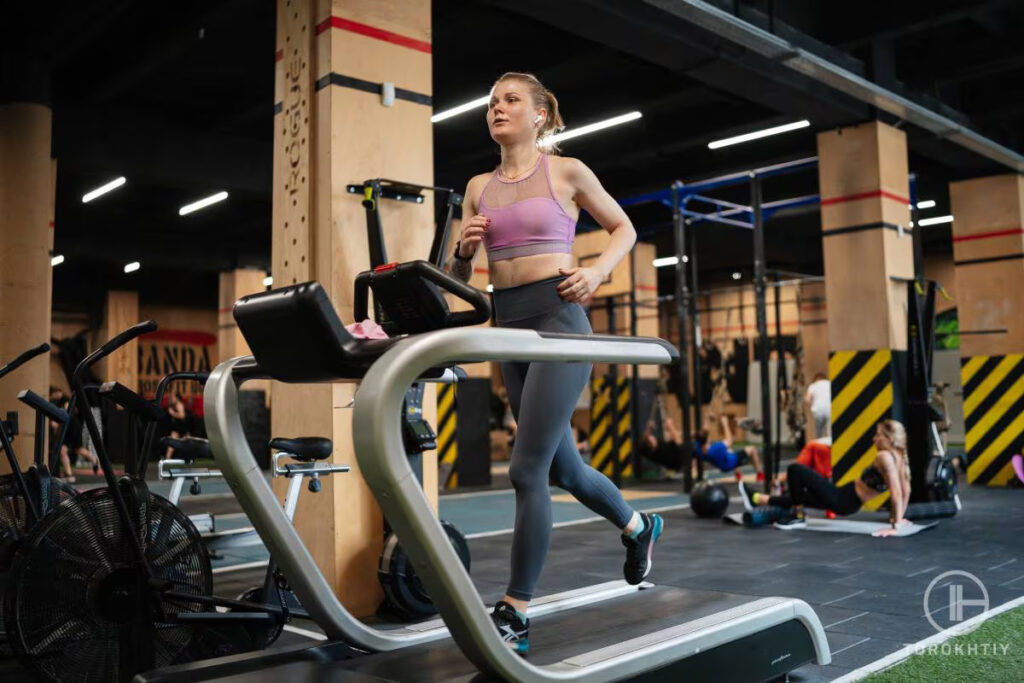
Pros And Cons Of Running After Lifting
So, we’ve looked at one side of the story, but what about running after lifting?
✅ Allows Energy To Be Used For Weights
When your primary goal is to gain muscle, lift heavier, and see progress in the weights area of the gym, it’s wise to prioritize your resistance session first, and running second. This allows energy to be used to support the muscles you’re training, ensuring you have enough stored energy to get through the session successfully.
❌ Muscles Will Already By Fatigued
Running after lifting likely won’t result in the longest or fastest run, as your muscles will already be fatigued by resistance training. This doesn’t matter too much if you’re only rounding off your session with a short stint of running, but if you’re planning on doing several miles, it might be better to do this on a day when you haven’t completed a heavy day.
✅ Supports Cardiovascular Health
Running and anaerobic exercises in general, have positive effects on the cardiovascular system and the overall health of our bodies. Weight training can be a key element to include for those wanting to improve their muscle mass and lifting capability, but finishing a session off with a run will ensure you’re keeping a check on your heart health too.
Tips From the Champ
Building a healthy body doesn’t just depend on exterior factors such as muscle mass or a six-pack. Health comes from inside too, so it’s vital to take care of your cardiovascular system alongside your weight training. Try incorporating some HIIT or running into your week to get the heart working.
Olympic Weightlifting Champion
❌ Can Lead To Exhaustion
After performing set after set of quality lifts, it’s normal to feel a little drained and tired. Forcing your body to run after a big session can be good for the heart, but it can also lead to exhaustion. Gymgoers ask ‘is it bad to run after lifting’ and the answer is no! But if you’re set on completing a run after resistance training, it’s wise to listen to your body if it feels too tired and take things steadily to avoid injury or extreme exhaustion.
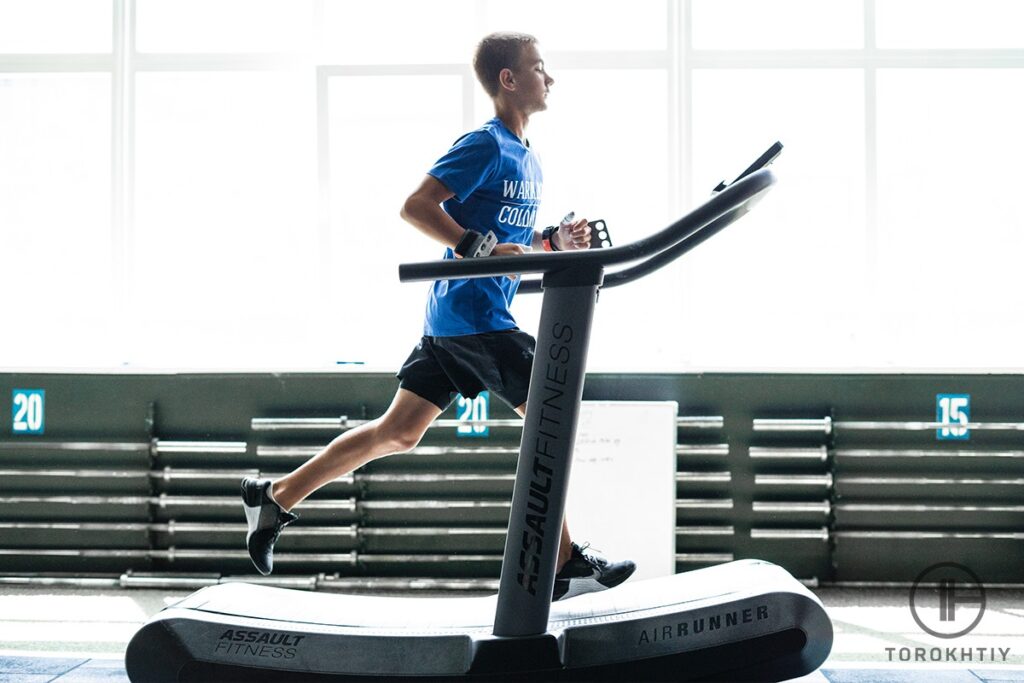
Scheduling Your Running And Weightlifting Workout
Scheduling running and weightlifting workouts is a great way to get organized with your training, and ensure you’re working out for your goals, balancing both these different forms of exercise.
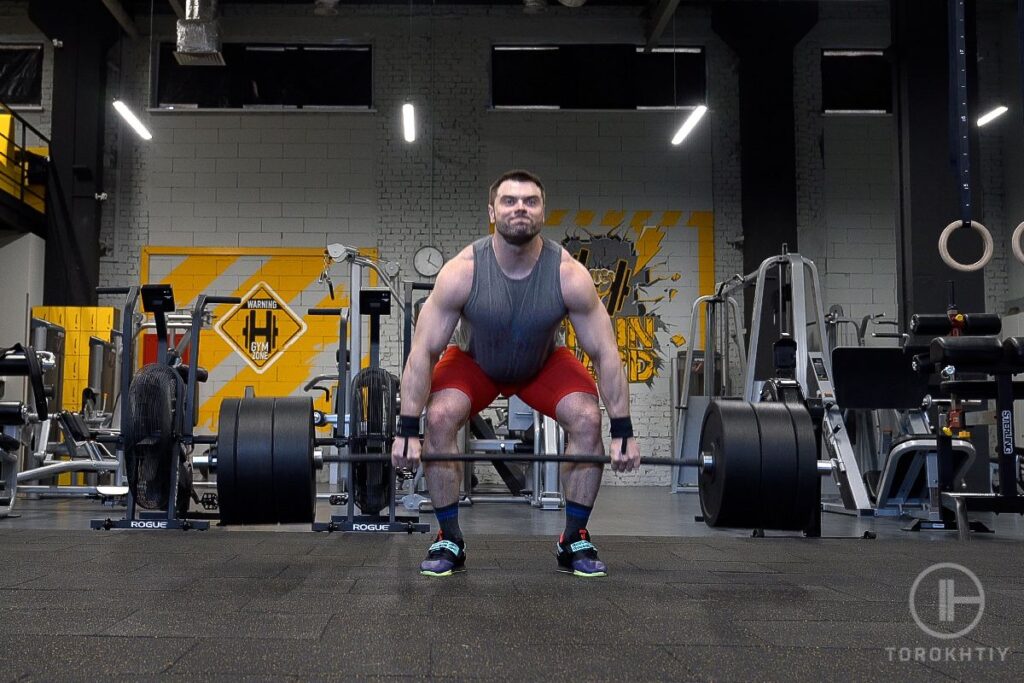
Workout 1: Push Session with Cardio Finisher
- Upper body warm-up with rotator cuff focus
- Push exercises such as bench press, shoulder press, flyes, and dips
- Active cool down/stretching
- 10-minute incline walk/light jog, followed by 20-minute medium-capacity run
Workout 2: Leg Day with Cardio Finisher
- Dynamic lower body warm-up with glute and hip activation
- Leg day exercises such as barbell squat, lunges, hamstring curl, and leg press
- Active cool down/stretching
- 10-minute brisk walk, followed by 10-minute medium-capacity run and 10-minute brisk walk cool down
Workout 3: Pull Session with Cardio Warm-Up
- Upper body warm-up followed by 10-minute low-intensity jog, 10-minute medium-intensity run, and 10-minute brisk walk
- Pull Exercises such as lat pull-down, face pulls, curls, and rows
- Active cool down/stretching
Save it for easy access!
Bookmark this page now to access the program and instructional videos anytime, anywhere.
Stop wasting time searching during your gym sessions.
Workout 4: Cardio Focus
- 5-minute incline walk, 5-minute jog, 10-minutes of sprint intervals (10s on 10s off), 5-10 minute brisk walk cool down
- Functional fitness with battle ropes, prowler push, core, and bodyweight exercises
- Active cool down/stretching
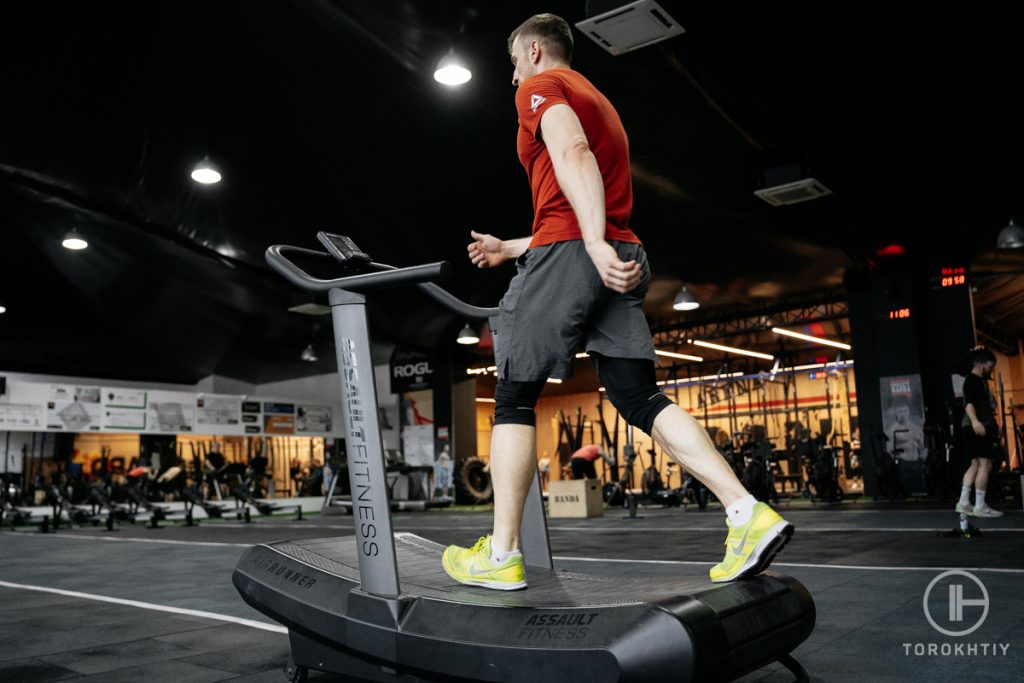
FAQ
Is It Better To Run After Or Before Lifting?
There are arguments for running both before and after lifting, but it comes down to personal goals, and where you want to see the most progression out of your time in the gym. If your focus is on endurance and speed, it’s best to prioritize running and complete this form of cardio at the beginning of your session.
When resistance training is the main focus, it’s wise to round off your session with a run and use most of your energy for lifting weights.
Is It Ok To Run Before Lifting Weights?
Running before lifting weights can warm up the body, getting it ready to tackle a resistance session. It can, however, be less useful to complete a considerably long run before lifting as this can tire the muscles, not leaving much energy in the tank. Many wonder whether to run before or after leg workout but the answer depends on where you are focussing most of your progression.
Conclusion
Running before or after lifting is a topic that will continue to be debated in the fitness community. To work out whether you should run before or after weights, sit down, and review your personal goals. If you have a strong focus on progressing with weights and strength, center your session around resistance training with a side of cardio after your sessions. If there’s a marathon or distance event on your horizons, bring running into the forefront of your sessions, supplemented by weight training.
Do you run before or after lifting? What results have you seen?
Also Read:
- How To Balance Running And Weightlifting?
- 4 Benefits Of Weightlifting For Seniors + 8 Simple Exercises
- 12 Cardio Alternatives To Running For A Full-Body Workout
- Running And Bodybuilding: 5 Benefits + A 7-Day Training Plan
- Strength Training for Runners (Detailed Program)
- Arm Exercises for Weightlifting: Are They Important?
- Prilepin’s Chart Guide: Optimize Your Lifts
Referenses:
- Darren E.R. Warburton, Crystal Whitney Nicol, and Shannon S.D. Bredin, “Health Benefits of Physical Activity: The Evidence”, National Center For Biotechnology Information, https://www.ncbi.nlm.nih.gov/pmc/articles/PMC1402378/ (Accessed February 5 2024)
- Rory B. Weiner, MD, FACC; Aaron L. Baggish, MD, FACC, “The Impact of Physical Activity (Running) on Cardiovascular Outcomes”, American College Of Cardiology,
https://www.acc.org/latest-in-cardiology/articles/2015/05/11/07/27/leisure-time-running-reduces-all-cause-and-cardiovascular-mortality-risk (Accessed February 5 2024) - “Resistance Training Health Benefits”, Victoria State Government Department Of Health, https://www.betterhealth.vic.gov.au/health/healthyliving/resistance-training-health-benefits (Accessed February 5 2024)
- A J Fradkin, B J Gabbe, P A Cameron, “Does warming up prevent injury in sport? The evidence from randomised controlled trials?”, National Center For Biotechnology Information, https://pubmed.ncbi.nlm.nih.gov/16679062/ (Accessed February 5 2024)
- Freya Oswald, Jennifer Campbell, Chloë Williamson, Justin Richards, and Paul Kelly, “A Scoping Review of the Relationship between Running and Mental Health”, National Center For Biotechnology Information, https://www.ncbi.nlm.nih.gov/pmc/articles/PMC7663387/ (Accessed February 5 2024)
- “Running and Jogging – Preventing Injury”, Victoria State Government Department Of Health, https://www.betterhealth.vic.gov.au/health/healthyliving/running-and-jogging-preventing-injury (Accessed February 5 2024)
- Harsh Patel, Hassan Alkhawam, Raef Madanieh, Niel Shah, Constantine E Kosmas, and Timothy J Vittorio, “Aerobic vs anaerobic exercise training effects on the cardiovascular system”, National Center For Biotechnology Information, https://www.ncbi.nlm.nih.gov/pmc/articles/PMC5329739/ (Accessed February 5 2024)
Why Trust Us?
With over 20 years in Olympic weightlifting, strength training, nutrition coaching, and general fitness our team does its best to provide the audience with ultimate support and meet the needs and requirements of advanced athletes and professional lifters, as well as people who strive to open new opportunities and develop their physical capabilities with us.
By trusting the recommendations of our certified experts in coaching, nutrition, and sports training programming, as well as scientific consultants, and physiotherapists, we provide you with thorough, well-considered, and scientifically proven content. All the information given in the articles concerning workout programming, separate exercises, and athletic performance, in general, is based on verified data.
The product testing process is described in more detail here.
Oleksandr is a running coach and member of the Nike Run Club coaching team for 8 years. A participant in national and international competitions at distances from one kilometer to the ultra trail. Owner of mountain trail running camps. Nowadays Oleksandr is responsible for creating running training programs for athletes of various levels, coaching personally offline and online, conducts trail running camps in the mountains, participates in competitions.
Reviewed by: Oleksiy Torokhtiy
Olympic Weightlifting Champion, PhD in Sport Science
Best Results: Snatch – 200 kg,
C&J – 240 kg
Oleksiy Torokhtiy is a professional athlete boasting 20 years of experience in Olympic weightlifting. With multiple European and World titles under his belt, he has showcased his prowess in two Olympic Games (Beijing 2008 and London 2012). Upon concluding his illustrious career, Oleksiy dedicated himself to coaching. By 2022, he had conducted over 200 weightlifting seminars worldwide. He is the visionary behind an international sportswear and accessories brand known for its motto, “Warm Body Cold Mind.” Additionally, he is an esteemed author and the creator of a series of training programs and eBooks.






Still have questions after reading our article? Unlock your full potential by engaging with our experts and community! Don’t hesitate — leave a comment below and Oleksandr Zagrebelnyi will provide a personalized answer and insights to help you reach your goals.